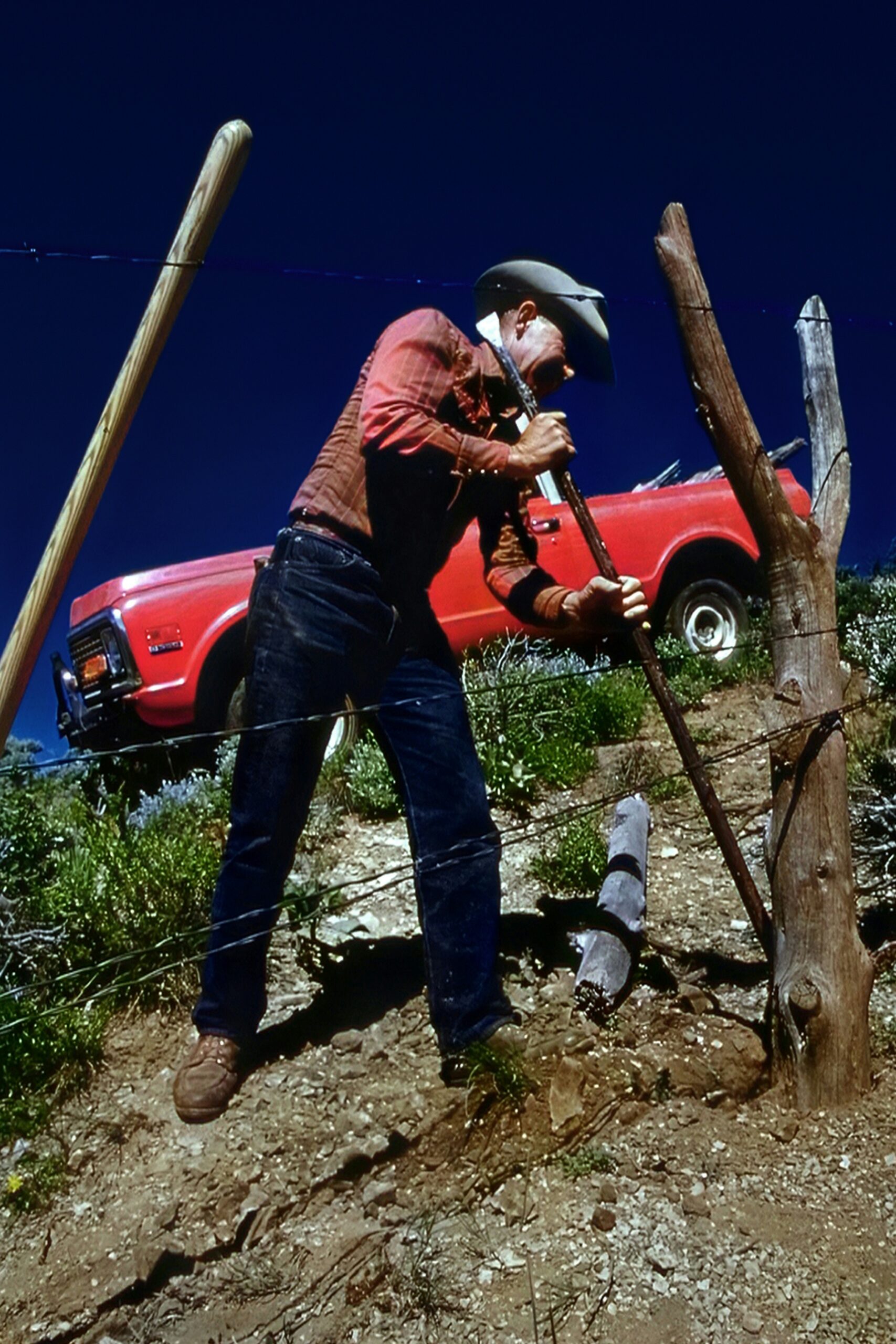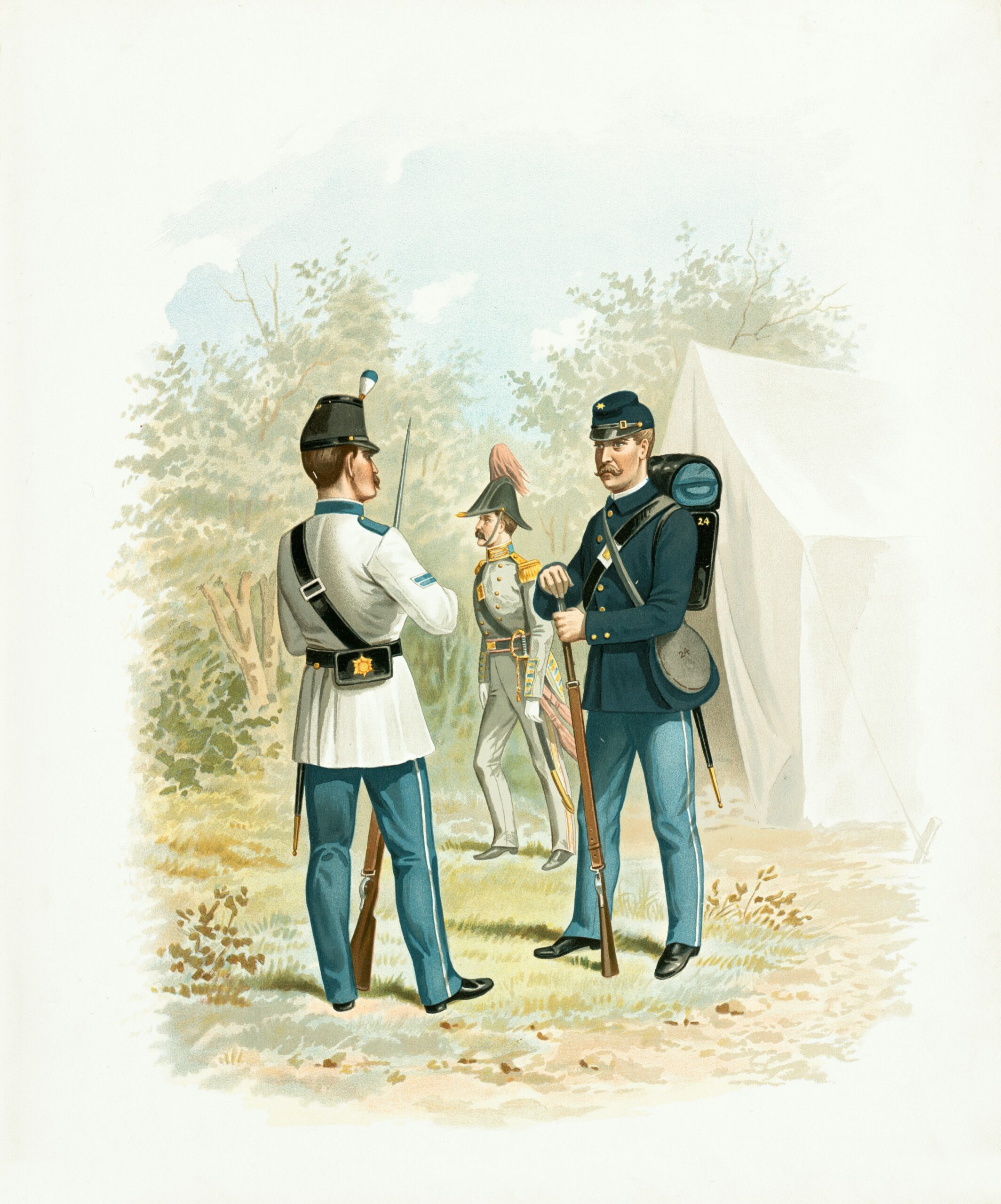If you’re an avid long-range shooter, you understand the importance of having the right optics for your skill and precision. Whether you’re an experienced marksman or just starting your journey into long-range shooting, finding the best optics can make all the difference in hitting your targets with accuracy and confidence. In this article, we’ll explore the world of long-range shooting optics and guide you towards the best options available in the market. So, grab your rifle and get ready to enhance your shooting experience like never before!
Understanding Long-Range Shooting Optics
Long-range shooting refers to the act of engaging targets at distances beyond typical combat ranges. This could range anywhere from 500 to 1500 yards or even further. To accurately hit targets at such distances, shooters heavily rely on optics. Optics play a vital role in providing clear and magnified views of the target, ensuring precise aim and successful hits. Therefore, understanding the different types of long-range shooting optics and their features is essential for any aspiring long-range shooter.
Factors Determining the Optimal Optics for Long-Range Shooting
When choosing the optimal optics for long-range shooting, several factors come into play. These factors will influence the type of optics you need to enhance your shooting experience and improve overall accuracy.
Shooting Intent
Understanding your shooting intent is crucial in determining the right optics for long-range shooting. Are you a hunter looking to reach targets at great distances or a competitive shooter trying to hit targets in precision matches? Your shooting intent will guide you in selecting the appropriate optics that cater to your specific needs.
Field Conditions
The environment in which you’ll be shooting plays a significant role in selecting the right optics. Consider factors such as weather conditions, lighting conditions, and terrain. Optics that excel in low-light conditions or are built to withstand extreme weather conditions may be necessary depending on the field conditions you anticipate encountering.
Type of Firearm Used
The type of firearm you plan to use for long-range shooting also plays a crucial role in determining the optimal optics. Bolt-action rifles, semi-automatic rifles, and even precision chassis rifles may require different optics to complement their specific characteristics. Consider the mounting requirements and compatibility of the optics with your firearm when making a decision.
Budget Constraints
Budget is often a determining factor in any purchase decision, and optics for long-range shooting are no exception. Optics can range from affordable to highly expensive, with prices varying based on factors such as quality, brand, and additional features. Set a budget that suits your needs and explore options within that range to make an informed decision without compromising on quality.

Variety of Long-Range Shooting Optics
Long-range shooting optics come in various forms, each with its advantages and specific purposes. Understanding the different types of optics available will help you make an educated choice based on your shooting requirements.
Spotting Scopes
Spotting scopes are powerful telescopes designed to provide high magnification for observing targets at long distances. They offer crystal-clear images, making them ideal for identifying bullet impact points, spotting hits on steel targets, or observing game at extended ranges. With their higher magnification range compared to binoculars, spotting scopes are favored by precision shooters and long-range hunters.
Binoculars
Binoculars are a versatile option for long-range shooting, providing the benefit of having two eyes engaged with the target. They offer a wider field of view compared to spotting scopes, making them useful for scanning large areas and easily spotting targets. Binoculars are compact, portable, and generally more affordable, making them a popular choice for hunters and shooters who need to scout and observe targets from a distance.
Riflescopes
Riflescopes are the most commonly used optics for long-range shooting. These scopes attach directly to the rifle and allow shooters to aim accurately at their targets. Riflescopes come in various magnification ranges, reticle types, and objective lens diameters to cater to different shooting applications. They offer precise aiming points and settings for windage and elevation adjustments, allowing shooters to compensate for external factors that may affect their bullet trajectory.
Holographic Sights
Holographic sights, also known as reflex sights, are another option for long-range shooting, although they are more commonly used for close to mid-range engagements. These sights use a reticle projected onto a clear glass window, superimposing the aiming point onto the target. Holographic sights offer quick target acquisition, unlimited eye relief, and parallax-free aiming, making them popular among tactical shooters and law enforcement personnel.
Understanding the Anatomy of a Scope
To fully grasp the capabilities and functionality of long-range shooting optics, it is essential to understand the different components found in a scope.
The Lens
The lens is the primary component in any optic, responsible for transmitting and focusing light onto the shooter’s eye. It determines the quality of the image produced, and features such as lens coatings and glass quality can greatly affect image clarity, brightness, contrast, and color reproduction. High-quality lenses with multiple coatings will enhance your shooting experience and allow for better target identification.
The Reticle
The reticle, often referred to as a crosshair, is the aiming point displayed inside the scope. There are various reticle types available, including traditional crosshairs, illuminated reticles, and BDC (bullet drop compensating) reticles. The reticle aids in aligning the firearm with the target and helps shooters compensate for bullet drop, windage, and elevation adjustments.
The Adjustment Turrets
The adjustment turrets on a scope allow shooters to fine-tune their aim by making adjustments to windage and elevation. These turrets typically have audible clicks and precise measurements, enabling shooters to make calculated adjustments to compensate for environmental variables such as wind or target distance. The ease of use and accuracy of the adjustment turrets greatly impact the overall shooting experience.
Magnification
Magnification refers to the degree to which the image is enlarged by the optic. Different scopes offer various magnification ranges, allowing shooters to zoom in on their target and acquire a clear view. Higher magnification is beneficial for long-range shooting as it enables shooters to see targets more clearly, identify details, and make precise shots. However, it’s important to find the right balance of magnification for your shooting application to avoid issues such as mirage distortion and reduced field of view.

High performing Riflescopes for Long-Range Shooting
When it comes to high-performing riflescopes for long-range shooting, several options stand out as top contenders. These riflescopes are known for their exceptional features and are trusted by professional shooters and experienced hunters.
Leupold VX-6 7-42x56mm
The Leupold VX-6 7-42x56mm is a highly versatile riflescope that offers exceptional clarity and precision. With a wide magnification range of 7-42x and an impressive 56mm objective lens diameter, this scope provides bright and clear images even in low-light conditions. The Leupold VX-6 is renowned for its durability and features a robust construction that can withstand the demands of long-range shooting.
Nightforce ATACR 5-25x56mm
The Nightforce ATACR 5-25x56mm is a top-tier riflescope that excels in long-range shooting applications. With its excellent optical clarity, generous magnification range, and large objective lens diameter, this scope ensures a sharp and bright image even at extreme distances. The Nightforce ATACR is built to withstand harsh conditions and offers precise adjustments, making it a favorite among competitive long-range shooters.
Vortex Optics Razor HD Gen II 4.5-27x56mm
The Vortex Optics Razor HD Gen II 4.5-27x56mm is a high-quality riflescope designed for long-range precision shooting. Boasting exceptional optical performance, this scope delivers impressive image resolution and color fidelity. With its wide magnification range and large objective lens diameter, the Vortex Optics Razor HD Gen II ensures optimal image quality and visibility at all distances. Its robust construction and reliable tracking capabilities make it an excellent choice for serious long-range shooters.
Riflescope Features for Long-Range Shooting
When selecting a riflescope for long-range shooting, several features should be taken into consideration to ensure optimal performance and reliability.
Objective Lens Diameter
Larger objective lens diameters allow more light to enter the scope, resulting in brighter images and better low-light performance. A larger objective lens diameter is beneficial for long-range shooting, where target identification is crucial, especially in dimly lit conditions.
Magnification Range
Choosing the right magnification range is vital for achieving accurate shots at varying distances. Higher magnification allows for better target visualization and identification, but it may sacrifice field of view. Consider the shooting distances and intended use of the riflescope to select an appropriate magnification range.
Reticle Type
The reticle type can greatly influence shooting accuracy, especially in long-range scenarios. Consider reticles designed for bullet drop compensation, wind hold-off, or those equipped with illuminated features to enhance visibility in low-light conditions. Select a reticle type that aligns with your shooting style and requirements.
Scope Construction and Durability
Long-range shooting often involves adverse weather conditions and rigorous use. When choosing a riflescope, opt for a robust construction featuring high-quality materials that can withstand rough handling and environmental factors. Look for scopes that are waterproof, shockproof, and fog proof to ensure reliable performance in any situation.

Best Binoculars for Long-Range Shooting
Binoculars offer a portable and versatile solution for long-range shooting enthusiasts. Here are some of the best binoculars that cater to the specific needs of long-range shooters:
Bushnell Legend Ultra HD M-Series 10x 42mm
The Bushnell Legend Ultra HD M-Series binoculars are known for their exceptional image quality and rugged construction. With their 10x magnification and 42mm objective lens diameter, these binoculars offer a perfect balance between image clarity and portability. The Bushnell Legend Ultra HD M-Series is also equipped with high-quality prisms and fully multicoated lenses, ensuring bright and sharp images even in low-light conditions.
Nikon Monarch 7 10×42 ED ATB
The Nikon Monarch 7 10×42 ED ATB binoculars are designed to deliver superior optical performance in a compact and lightweight package. With their 10x magnification and 42mm objective lens diameter, these binoculars provide ample magnification while maintaining a wide field of view. The Nikon Monarch 7 features extra-low dispersion glass elements and fully multicoated lenses, resulting in high-resolution images with excellent color fidelity.
Celestron SkyMaster 25×100 ASTRO
For long-range and stationary shooting applications, the Celestron SkyMaster 25×100 ASTRO binoculars offer impressive magnification and light-gathering capabilities. With their massive 100mm objective lens diameter and 25x magnification, these binoculars are perfect for detailed observation at extreme distances. The Celestron SkyMaster 25×100 ASTRO binoculars feature high-quality BAK-4 prisms and fully multicoated lenses, ensuring exceptional image brightness and contrast.
Binoculars Features to Look For
When selecting binoculars for long-range shooting, several features should be considered to optimize your viewing experience.
Magnification and Objective Lens Diameter
The combination of magnification and objective lens diameter determines the level of detail and brightness of the image. Higher magnification allows for greater detail, but it may sacrifice stability and field of view. Balancing this with an appropriate objective lens diameter ensures clear and bright images while minimizing shaking and discomfort during prolonged use.
Field of View
A wider field of view allows for easier target acquisition and tracking, making it an important consideration for long-range shooting. A wider field of view enables you to scan larger areas quickly, reducing the chance of missing potential targets or movements around your primary focus.
Build and Waterproofing
Durability and weather resistance are crucial factors for binoculars used in long-range shooting. Look for binoculars with sturdy construction that can withstand rugged use and adverse conditions. Waterproofing is also important to protect the binoculars from moisture and ensure usability in rain or humid environments.
Quality of the Prism and Optics
The quality of the prism, often BAK-4 or BAK-7, affects the clarity and brightness of the image. BAK-4 prisms offer superior light transmission and edge-to-edge sharpness compared to BAK-7 prisms. Additionally, consider the coatings applied to the lenses, such as fully multicoated or anti-reflective coatings, which enhance image quality by reducing glare and improving contrast.
Choosing a Spotting Scope
Spotting scopes are a valuable tool for long-range shooting, allowing shooters to observe targets with more detail and precision. Consider these top-notch spotting scopes when making your selection:
Vortex Optics Razor HD Spotting Scope
The Vortex Optics Razor HD Spotting Scope is renowned for its exceptional optical performance and rugged construction. With its premium HD (High Density) extra-low dispersion glass, this spotting scope delivers sharp and true-to-life images with excellent color accuracy. The Vortex Optics Razor HD Spotting Scope features a wide zoom range and large objective lens diameter, ensuring bright and clear images even at extended distances.
Leupold Mark 4 12-40x60mm Tactical Spotting Scope
The Leupold Mark 4 Tactical Spotting Scope is designed for long-range precision shooting and is favored by professional shooters and spotters. With its superb optics, extensive magnification range, and generous objective lens diameter, this spotting scope provides unparalleled target identification and tracking capabilities. The Leupold Mark 4 is built to withstand the rigors of field use and comes with a rugged and waterproof construction.
Zeiss Dialyt 18-45×65 Field Spotting Scope
The Zeiss Dialyt Field Spotting Scope offers exceptional optical performance and versatility in a lightweight and compact design. With its wide zoom range and mid-sized objective lens diameter, this spotting scope delivers impressive image quality while maintaining portability. The Zeiss Dialyt features high-quality optics, including fully multicoated lenses and fluoride glass elements, ensuring outstanding clarity and color fidelity in all lighting conditions.
Spotting Scope Features for Long-Range Shooting
When choosing a spotting scope for long-range shooting, consider these important features to enhance your shooting experience:
Zoom Range
A wide zoom range allows for flexible target observation and identification at varying distances. Look for spotting scopes with a balanced zoom range that covers both wide views for scanning and high magnification for detailed target examination.
Objective Lens Diameter
A larger objective lens diameter enables more light to enter the scope, resulting in brighter and clearer images. Consider scopes with larger objective lens diameters, particularly if shooting in low-light conditions, to ensure optimal visibility and target identification.
Field Of View
A wide field of view allows for easier target acquisition and tracking, particularly when observing moving targets or scanning large areas. Consider spotting scopes with wider field of views to minimize the need for constant repositioning and to improve overall shooting efficiency.
Quality of Glass
The quality of the glass used in the spotting scope greatly affects image quality, particularly in terms of clarity, contrast, and color representation. Look for spotting scopes with high-quality glass and lens coatings, such as ED (Extra-Low Dispersion) glass, fully multicoated lenses, and dielectric coatings, to ensure exceptional optical performance.
Build and Waterproofing
Spotting scopes used for long-range shooting should be ruggedly built to withstand the demands of outdoor use and adverse weather conditions. Robust construction with features like waterproofing, fog proofing, and shock resistance ensures durability and dependable performance in any shooting environment.
By understanding the various types of long-range shooting optics, the factors that determine their optimal use, and the essential features to look for, you can make an informed decision when selecting optics for your long-range shooting endeavors. Whether you choose a riflescope, binoculars, or a spotting scope, investing in quality optics will greatly enhance your shooting accuracy, as well as your overall shooting experience. Happy shooting!
